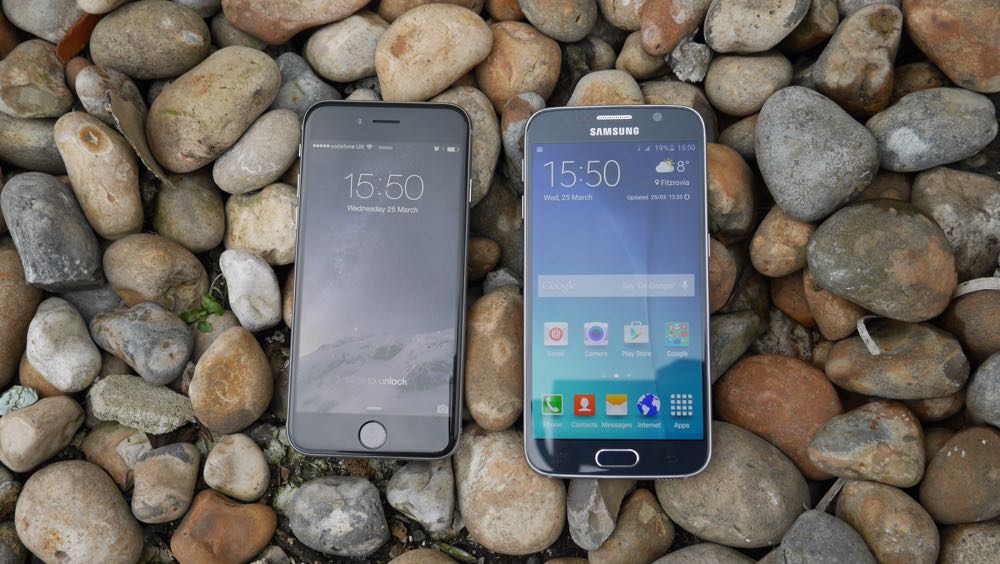Samsung Galaxy S7 vs iPhone 6s
Galaxy S7 Edge named as safest smartphone


Samsung’s new flagship smartphone has arrived – the Galaxy S7.
It’s a device that will be sure to please Samsung fans, boasting a stunning design and many improved features over its predecessors.
With rivals Apple yet to announce the follow-up to their popular iPhone 6s, the smartphones are undoubtedly two of the leading options on the market. So just how do the flagships compare?
Latest News
29/11/2016
Galaxy S7 Edge named as safest smartphone
The Galaxy S7 Edge is the safest smartphone on the market, new US research has found.
As reported by Inferse, Samsung’s Premium flagship goes further than any competitors when it comes to minimalising electromagnetic emissions.
ChannelPro Newsletter
Stay up to date with the latest Channel industry news and analysis with our twice-weekly newsletter
That’s according to research by the Federal Communications Commission (FCC), who measure emissions of devices by Specific Absorption Rate (SAR). This SAR reading measures the amount of energy that is absorbed by the user’s body upon exposure to radio frequency electromagnetic fields.
The FCC monitors the US market, ensuring emissions released from a smartphone does not exceed 1.6w/kg - meaning the lower the reading, the safer the handset.
The S7 Edge was found to possess an SAR value of 0.264w/kg, placing it at the top of the list of the safest devices. The Asus Zenfone 3 placed second (0.278w/kg), with the Samsung Galaxy A5 (0.290w/kg), Lenovo Moto Z (0.304w/kg) and OnePlus 3 (0.394w/kg) completing the top five.
The regular Samsung Galaxy S7 also placed in the top 10, rated as the sixth safest phone on the market (0.406w/kg).
The list of the worst handsets for emissions was also compiled – topped by the Honor 8 (1.5w/kg). The Huawei P9 (1.43w/kg) placed second and the Apple iPhone 7 and 7 Plus, perhaps surprisingly, ranked third and fourth respectively. The Honor 5C completes the top five worst offenders with a rating of 1.14w/kg.
Emission limits are set by the World Health Organisation – and implemented by government bodies - in order to reduce the risks of cancer caused by radiation exposure.
19/10/16
Galaxy Note 7 users turn to Apple
Apple is set to benefit from the recent Samsung Galaxy Note 7 recall saga, according to a report from KGI Securities analyst Ming-Chi Kuo.
After Note 7 devices began to catch fire, Samsung recalled and replaced the handsets - only for many of those to also suffer the same fate.
With the range now cancelled completely, leading analyst Ming-Chi Kuo states that as many as 5-7 million of an estimated 12-14 million Note users will switch to the iPhone 7.
Kuo's report adds that many users making the move to Apple will do so thanks to the draw of the iPhone 7 Plus' dual camera.
In addition, many consumers have opted for an iPhone due to them having "no trust in the Samsung brand anymore" - whilst a significant number "could be former iOS users".
The report claims these gains for Apple have "peaked out" already, however, and the effects of the Note 7 discontinuation should not last longer than a couple of months.
However, Kuo does warn that any repeat of the Note 7 mistakes with next year's Galaxy S8 and Samsung's brand "will be hurt immensely".
Screen and Display
The Galaxy S7 and S7 Edge both feature 5.1 inch Super AMOLED displays - enabling richer colours and a sharper picture - while screen resolution stands at 2,560 x 1,440 (577ppi).
In comparison, the iPhone 6s sports a slightly smaller 4.7 inch IPS LCD screen with a resolution of 1334 x 750 (326ppi) ��� resulting in a display that is less sharp than the S7.
The Apple flagship does, however, include the innovative 3D Touch technology - meaning users can use pressure to activate different features.
Storage and Hardware
The Galaxy S7 is only available with 32GB of internal storage but, unlike last year’s S6, it does include expandable storage capabilities via a microSD slot.
The iPhone 6s does not offer this – but it does come available in 16GB, 64GB and 128GB variations – albeit with pricing variations.
Both handsets pack powerful processors that are more than capable of covering the demands of the modern smartphone.
The Galaxy S7 takes makes use of Samsung’s Exynos 8890 processor (Snapdragon 820 for US models), partnered with 4GB of RAM. The iPhone, in comparison, is powered by Apple’s A9 processor and 2GB of RAM.
Both have non-removable batteries, with Samsung’s 3000mAh cell larger than Apple’s 1714mAh counterpart.
Camera
Samsung has actually down-sized the rear camera for the new model – with the S7 equipped with 12MP instead of the Samsung S6’s 16MP.
This places it on par with the iPhone 6s but it does, however, include a dual-pixel sensor which enables the rear camera to focus quicker and with greater accuracy.
The S7 also boasts a larger pixel size and aperture – meaning a stronger performance in lower lighting.
Both smartphones are capable of recording 4K video with 240 fps slow-motion functionality.
Design
Available in black or gold, the S7 weighs in at 152g and has a depth of 7.9mm. Samsung has stuck with the glass and metal combination that helped ensure the S6’s popularity and the backs of the handset are curved for better handling.
The device also has an IP68 rating – meaning it is water resistant for up to 30 minutes (in depths of up to five metres).
Apple offers up a tough, Series 7000 anodised aluminium back on their 6s devices whilst managing to remain slim at 7.1mm. Weighing just 143g, models are available in a wider range of colours than its Samsung competitor – silver, gold, rose gold and grey.
Dan is a freelance writer and regular contributor to ChannelPro, covering the latest news stories across the IT, technology, and channel landscapes. Topics regularly cover cloud technologies, cyber security, software and operating system guides, and the latest mergers and acquisitions.
A journalism graduate from Leeds Beckett University, he combines a passion for the written word with a keen interest in the latest technology and its influence in an increasingly connected world.
He started writing for ChannelPro back in 2016, focusing on a mixture of news and technology guides, before becoming a regular contributor to ITPro. Elsewhere, he has previously written news and features across a range of other topics, including sport, music, and general news.

